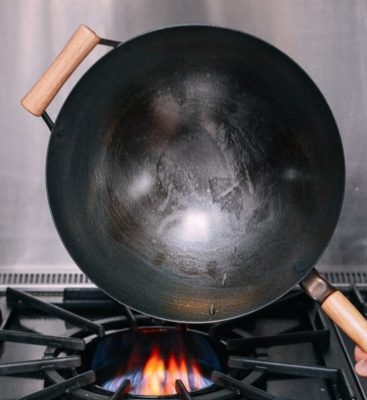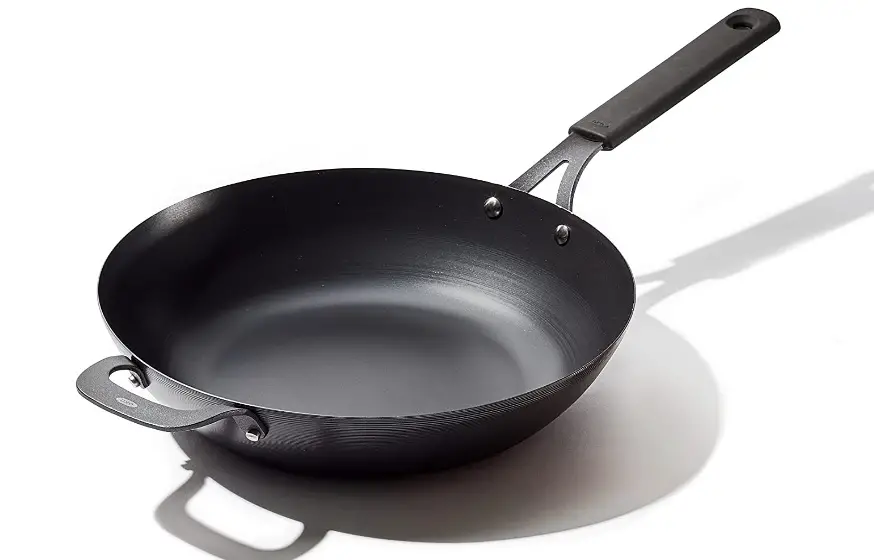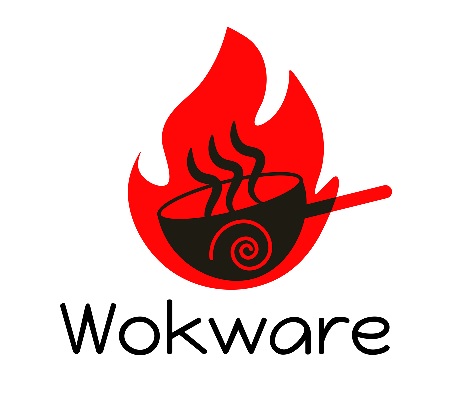Everything About Boiling Water in Carbon Steel
Updated on April 2023

Wokware is reader supported. When you buy through links on our site, we may earn an affiliate commission. Learn Here.
Carbon steel is a safe material that is easy to work with and reacts quickly to sudden changes in temperature. That's why it is a popular choice for manufacturing cooking utensils like pots and pans. But given the huge iron content in carbon steel, you might fear boiling water in it will rust the utensil.
In this article, I will give you a proper and logical answer to "Can I boil water in carbon steel?" along with "boiling in seasoned vs. unseasoned carbon steel", "boiling in a carbon steel pot vs. pan" and finally "how to boil in a carbon steel to keep your pan and food safe".
Can You Boil Water in Carbon Steel?
Carbon steel is an alloy made from iron and carbon. The amount of carbon in carbon steel ranges from 0.05% to 2.0%, and the rest is iron. It is also more flexible and can withstand rapid temperature changes, making it ideal for boiling. So, yes, you can boil water in carbon steel.
Read: Is Carbon Steel Safe for Cooking?
Can you boil Water in Seasoned Carbon Steel?
Yes, you can boil water in seasoned carbon steel. Seasoning carbon steel protects it from rust and corrosion and makes it less likely to stick, making it a great choice for boiling. Rather, you should avoid boiling water in an unseasoned carbon steel pan or pot. Here's why-
Different things can happen when you boil something in a seasoned carbon steel pan versus one that hasn't been used before. This is because seasoned pans have a protective layer of polymerized oil on the surface, while unseasoned pans don't. Here are some things to consider:


A carbon steel pan that has been used for a while has a layer of polymerized oil on its surface. This makes the surface naturally non-stick which is helpful when boiling starchy foods such as pasta, rice, or potatoes, as they can easily stick to a non-seasoned pan. A non-seasoned carbon steel pan may require more frequent stirring to prevent sticking.

Carbon steel is prone to rust and corrosion when it comes in contact with water, especially if it hasn't been seasoned properly. A seasoned carbon steel pan has a protective layer of oil that helps to prevent rust and corrosion, which can make it a better choice for boiling liquids. A carbon steel pan that hasn't been used for a long time may need more care.

A carbon steel pan that has been used before can be easier to clean than one that hasn't been used before. Seasoning your carbon steel helps release sticky food and that's why cleaning becomes a breeze. A non-seasoned carbon steel pan may require more elbow grease to clean, particularly if food has stuck to the surface.

A seasoned carbon steel pan can add flavor to boiled foods, particularly if the pan has been seasoned with a flavorful oil such as olive oil. A non-seasoned carbon steel pan may not add as much flavor to boiled foods.
In the end, whether you boil water in a pan that has been used before or one that hasn't will depend on your personal preferences and the task at hand. If you're boiling starchy foods or want to prevent rust and corrosion, a seasoned pan may be a better choice. If you're looking to add flavor to your boiled foods or don't mind a bit of stickiness, a non-seasoned pan may work just fine.
Boiling Water in a Carbon Steel Pan Vs Pot:

Due to their different sizes and shapes, boiling water in a carbon steel pan or a pot can lead to slightly different results. Here are some things to consider:

Generally speaking, pots are larger and have more capacity than pans, which makes them better suited for boiling large quantities of water or liquids. If you need to boil a large amount of water for pasta or soup, a pot may be a better option than a pan.

Pans have a wider surface area than pots, which can make them ideal for boiling liquids that require frequent stirring, such as sauces or gravies. The wider surface area allows for more evaporation and can help to thicken the liquid more quickly.

Different shapes and thicknesses of carbon steel pans and pots make them handle the heat in different ways. Pans are usually thinner and heat up more quickly than pots, which can make them a good choice for boiling liquids that don't require as much time to cook, such as blanching vegetables. Pots, on the other hand, are usually thicker and can hold heat better, which can help when boiling liquids that need to cook for longer, like soups or stews.

Pots can be easier to clean than pans due to their larger size and straight sides. Pans, on the other hand, may have more curved edges and corners that can make it more difficult to remove food particles or debris.
Ultimately, whether you choose to boil in a carbon steel pan or pot will depend on the specific task at hand and your personal preferences. If you're unsure which to use, consider the capacity, surface area, heating requirements, and cleaning requirements of the liquid you're boiling and choose the vessel that best suits your needs.
How to Safely boil Water in carbon steel?
To boil water in carbon steel, you'll need a pot or pan that is specifically designed for boiling. Take a pot or pan made of high-quality carbon steel that is thick enough to distribute heat evenly. A good carbon steel pot or pan should also have a sturdy handle that is securely attached to the pot or pan.

- Properly clean and dry your carbon steel pan or pot before boiling the water. Just use plain soap and water to clean the utensil, and then dry it with a clean towel. Hygiene is crucial before boiling in carbon steel.
- Once your pot or pan is clean, fill it with water and place it on the stove.
- To boil water in carbon steel, heat the pot or pan over high heat until the water begins to boil. To keep the water from boiling over or sticking to the bottom of the pot or pan, keep an eye on it and stir it occasionally.
- Now simmer the gas once the water is fully boiled. Boiling your liquid for a long time on a low heat ensures that any impurities have been taken out.
- Finally, after boiling, turn off the heat and allow the pot or pan to cool before washing it. This will keep your carbon steel pot or pan from warping or cracking and keep it in good condition for a long time.
In the end, carbon steel is a good choice for boiling because it is strong and can handle high temperatures. If you choose a good pot or pan made of carbon steel and follow the steps above, you can boil water and other liquids safely in your kitchen. So next time you need to boil water for pasta, tea, or any other recipe, consider using a carbon steel pot or pan for the job!
Summary: Can You boil Water in Carbon Steel?

Yes, you can boil water in carbon steel, as this material is flexible and adjustable with heat changes. But to protect your carbon steel pan or pot from corrosion, seasoning it before boiling is recommended. If you don't want the seasoning oil to sweep into your liquid and add extra flavor to your boiled liquid, then opt for nonstick-coated carbon steel. Otherwise, boiling frequently in a non-protected carbon steel pot or pan might rust it and contaminate your food. Also, before boiling, clean your carbon steel pot thoroughly to keep your food safe.
Author: Preeunka
Editor at Wokware
She is an expert in the niche of kitchenware for 10 years now. She has given readers fact based, well researched, to the point answers of their valuable questions. Her goal is to simplify kitchen products and their utilities.
